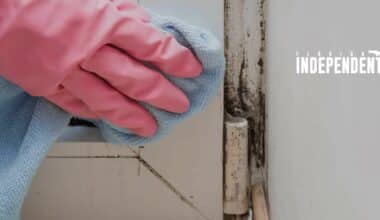When you move into a new house and you get a sump pump installed in the basement, you probably think you’ve conquered the flooding issue forever. But very soon you’ll realize that simply installing a sump pump is not your ticket to flood-proof basements. You also need to make sure that the sump pump is effective and efficient against pouring water.
Have you been facing problems despite having a sump pump? Then the sump pump may be your problem.
Table Of Contents
Read on to know about the common sump pump problems
1. Overworked system
Sometimes the capacity of the sump pump may turn out to be insufficient for handling the volume of water flooding in. Maybe the pump is old or its power is limited. A lot of times the problem can be the inferior quality of the pump too.
If your pump is in decent working condition but struggling to keep up with the burgeoning water flow, you need to upgrade the system. Look for a high-quality sump pump replacement with a capacity that will suit your requirement. If the space is huge, you should consider installing more than one pump for satisfactory pumping efficiency.
2. Poor maintenance
Improper use and poor maintenance can adversely affect the efficiency of the sump pump. This sort of neglect can lead up to major issues if the pump fails to contain a flooding situation in the house.
Regular inspection of the sump pump is crucial. Sump pump maintenance is best left at the hands of an expert.
3. Improper installation
A clear sign of poor installation is the fact that your sump pump would appear to be working fine, but still not collecting water. It is likely that at the time of installation, connections with drainage pipes were not done correctly. It may even be that the basement drainage pitch was not looked after and therefore, water flow is not appropriately diverted.
Check for problems in the drainage and call an expert to fix the issues. If you don’t already have a perimeter drain system, you should get that installed too.
4. Frozen pipes
Discharge lines that lead water away from the house can get frozen if they remain exposed to extreme low temperatures. This can create a blockage in the sump pump system and affect its functioning.
The best way to guard the pipes from frost is to keep them covered and insulated. If there is no way you could bypass frozen pipes, you should consider installing special attachments on the discharge pipes. These attachments ensure that the water flow is not interrupted despite the pipes being frozen.
5. Incorrect size
We discussed the capacity of the pump previously, but there’s another related aspect you should specifically consider while troubleshooting sump pump issues. The size of the pump also makes a lot of difference to its proper functioning.
If the sump pump is too large, it will be working too hard to pump the water out. If it’s way too small, it will just prove to be insufficient. If you’re having sump pump problems check if the underlying cause is the size of the pump.
6. Switched off
A lot of times the sump pump problem can be so petty, you’d find it funny you got worried in the first place. Yes, we are talking about the inadvertent turning off of the power switch.
This can happen due to water pressure, rodents’ mischief or any other system malfunction. If your sump pump doesn’t appear to start up, go ahead and check if the power switch is off. Your solution could just be a flick of the switch away.
7. Power cut
It’s possible that you’ve considered everything we’ve mentioned above and still the puzzle pieces of your sump pump failure don’t fit. In that case, we’d suggest you get the main electric supply and circuitry checked.


